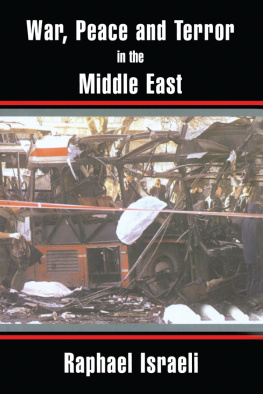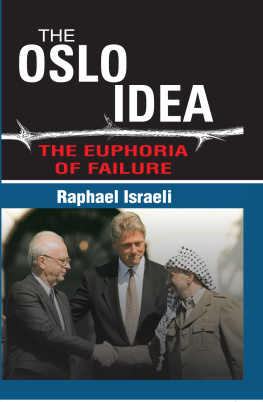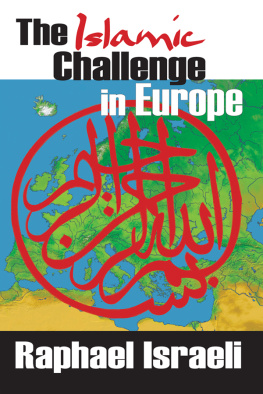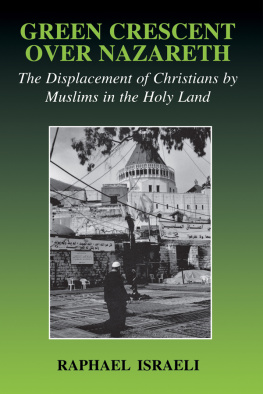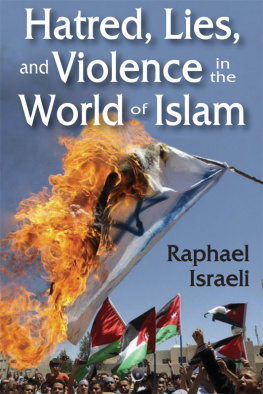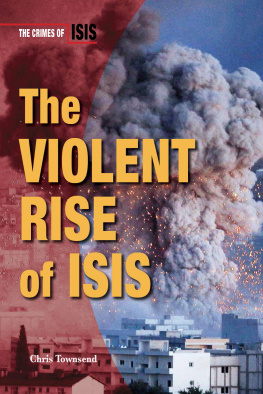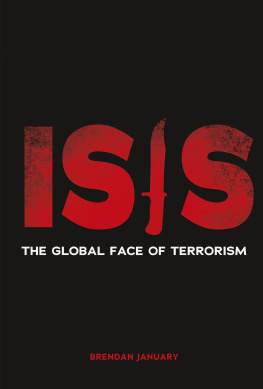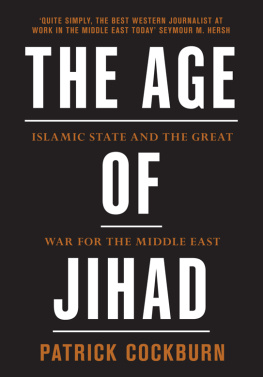First published 2016 by Transaction Publishers
Published 2017 by Routledge
2 Park Square, Milton Park, Abingdon, Oxon OX14 4RN
711 Third Avenue, New York, NY 10017, USA
Routledge is an imprint of the Taylor & Francis Group, an informa business
Copyright 2016 by Taylor & Francis.
All rights reserved. No part of this book may be reprinted or reproduced or utilised in any form or by any electronic, mechanical, or other means, now known or hereafter invented, including photocopying and recording, or in any information storage or retrieval system, without permission in writing from the publishers.
Notice:
Product or corporate names may be trademarks or registered trademarks, and are used only for identification and explanation without intent to infringe.
Library of Congress Catalog Number: 2015033830
Library of Congress Cataloging-in-Publication Data
Israeli, Raphael, author.
The internationalization of ISIS : the Muslim state in Iraq and Syria /
by Raphael Israeli.
pages cm
Includes bibliographical references and index.
ISBN 978-1-4128-6273-8 (hardcover : alk. paper)--ISBN 978-1
4128-6223-3 (e-book) 1. IS (Organization) 2. Terrorism--Iraq.
3. Terrorism--Syria. 4. Terrorism--Religious aspects--Islam.
5. InsurgencyyMiddle East. I. Title.
HV6433.I722I8557 2015
363.325--dc23 2015033830
ISBN 13: 978-1-4128-6273-8 (hbk)
To My Grand Daughter, Tal Israeli
For Launching her Professional Career
Of Creativity, Beauty and Aesthetics
At the London College of Fashion
September, 2015
In the summer of 2014, a previously marginal organization that few had heard about, headed by an obscure self-declared cleric warrior that no one had paid attention to, suddenly erupted into public awareness, first in the Middle East and then in the rest of the world, when it began to make amazingly successful inroads into vast parts of chaotic Syria and Iraq, and then launched deadly attacks on non-Muslims that came under its jurisdiction and began to execute Westerners who happened to venture into the territories under its control. Only then did the world public realize that it was a Sunni Muslim gathering of fanatics, led by cleric Baghdadi and self-named Daish (the Islamic State of Iraq and Syria, ISIS), which was intent on spreading its rule by the force of conquest in those critical areas of the Middle East.
That movement, which made stunningly rapid gains in those areas of the Arab world, and in so doing attracted volunteer youth from the Muslim world as well as from the West, soon came up with the assertion that it was aiming at establishing a caliphate, harking back to the ideal mode of government that had been prevailing in the post-prophetic Islamic world (after AD 632, when the Prophet died) and until the fall of the Ottoman Empire at the end of World War I (191418). One became necessarily intrigued by the many questions that were raised: What made that petty Muslim cleric to aspire so high as to wish to declare himself a caliph? Who were his followers, what was the secret of his sweeping success, and what were his chances to succeed?
For any keen observer of the Muslim world, the comparison was compelling to the rise of the Taliban in Afghanistan in the 1990s, where, taking advantage of the chaotic situation generated by the lasting civil war and the devastation it inflicted, a local cleric, Mullah Omar, followed at first by his madrasa students (Taliban) in the religious center of Qandahar, took control of that city and then of all Afghanistan. There too, thousands of volunteers had flocked from most Islamic countries, financed by Saudi Arabia and trained by the CIA, who were seeking to defeat the Soviet power which had invaded on Xmas day of 1979. After the Soviets were routed and retreated (1989), a civil war erupted between the warring factions for the control of the country, which only added more destruction and disunity to the unfortunate Afghani people. The emergence of the Taliban on the scene was the main factor which reunited the country and imposed peace and order under a very strict puritanical regime (19962001), until the American incursion in 2001 removed it.
There are so many parallels between the two situations, notably the American intervention, aided by some of its NATO allies, that it is tempting to probe the similarities and differences between the two and perhaps try to draw some lessons from the American fiasco in the first on the advisability of its conduct in the second. The major differences between the conditions in which these wars were/are being waged are already clear nonetheless: the Americans at first were attracted to Afghanistan in order to defeat the Soviets there at the height of the Cold War, and then they were compelled by September 11 to turn against their former Afghani allies there and to try to install a Western-style democracy, which continues to be threatened by the Taliban that are making a come back. In Iraq, where the Americans had invested thousands of lives and hundreds of billions of dollars in the decade of fighting and reconstruction (200312) and a genuine attempt to let Western democracy take root there, the threat posed by IS (ISIS) is not directly to the United States but to its Arab allies in the area, hence the latters half-hearted joining of the American-led battle there. These are the issues we propose to tackle in this book.
As always, I am indebted to my home-base, the Truman Institute for the Advancement of Peace at Hebrew University, for affording me the office space and facilities, as well as the financial aid for this research, and to my diligent assistant, Enav Hecht, who has intelligently and effectively helped to search for materials on this issue in the making and sorted it out to facilitate the writing. I am grateful for this generous assistance, for the scholarly ambience, and for the collegial exchange of ideas which accompanied me throughout and which are essential for any research to come to fruition. But all the errors of fact, misapprehension, or interpretation remain solely mine.
Jerusalem, Winter 2014
1
ISIS in the Web of Radical Muslims
In the past several decades, there has been talk among scholars, journalists, and politicians alike about an Islam of the minority bad guys, those extremist, fanatic, and radical fundamentalists who resort to violence, in order to enforce their brand of Islam on the rest of their coreligionists, who are supposedly the peaceful and moderate members of the majority of Muslims. This distinction, which was quantified by some in percentage points15 percent for the minority and 85 percent for the majorityhas created the temptation to produce a wishful but erroneous difference between the moderate Islam of the peace-loving majority and the radical Islam of the belligerent minority, as if there were two separate doctrines of Islam, the one amicable, to be placated and befriended, and the other bellicose, to be shunned and fought against. What has been termed Islamic terrorism, this construct being at all permissible in the government systems of many Western countries, where one can still speak freely and reveal the truth, was attributed to the bellicose type of Islam, while the rest of the Muslims, like the rest of the humanity, were dubbed the victims of Islamic fundamentalism. This distinction has allowed the critiques and victims of violent Muslims to condemn them in the most blatant terms without exposing themselves as Islamophobes or racists, as if multiethnic and multicultural Islam were a race or, if they were themselves Muslims, as traitors to their faith. Never mind that 15 percent out of 1.5 billion Muslims are in themselves a big-enough threatening mass of over two hundred million, even if there were no positive majority to dilute them.


